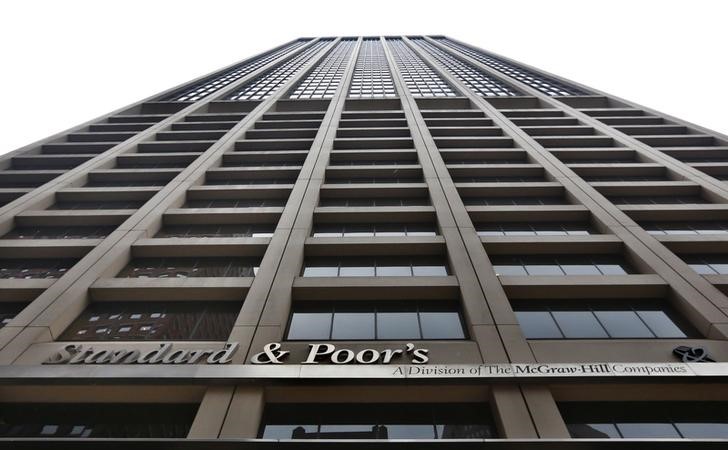 © Reuters. FILE PHOTO: A view shows the Standard & Poor’s building in New York’s financial district
© Reuters. FILE PHOTO: A view shows the Standard & Poor’s building in New York’s financial districtJOHANNESBURG (Reuters) – S&P Global Ratings downgraded South African local currency debt to “junk” territory on Friday, citing a further deterioration in the country’s economic outlook and public finances, sending the rand tumbling.
But a decision by Moody’s to only place South Africa on review for a downgrade may have limited further selling in the currency. Moody’s rates the country’s foreign and local currency debt on their lowest investment grade rung of Baa3.
The downgrade by S&P comes after Finance Minister Malusi Gigaba shocked markets on Oct. 25 by flagging sharply weaker growth expectations, a wider budget deficit and rising government debt.
The S&P lowered the long-term local currency sovereign credit rating to ‘BB+’ from ‘BBB-‘, and also cut the long-term foreign currency rating deeper into sub-investment grade territory, lowering it to ‘BB’ from ‘BB+’.
S&P raised the outlook on both the foreign currency and local currency ratings to stable from negative.
“Weak GDP growth has led to further deterioration of South Africa’s public finances beyond our previous expectations,” S&P said in a statement.
“We expect that offsetting fiscal measures will be proposed in the forthcoming 2018 budget in February next year, but these may be insufficient to stabilize public finances in the near term, contrary to our previous expectations.”
The rand
A cut to “junk” on the local currency debt by both S&P and Moody’s could have seen South African debt lose its place in the World Government Bond Index and the Barclays (LON:) Bloomberg index.
That could have forced index-tracking and rating-constrained funds to sell more than $10 billion in debt, analysts have predicted.
Fusion Media or anyone involved with Fusion Media will not accept any liability for loss or damage as a result of reliance on the information including data, quotes, charts and buy/sell signals contained within this website. Please be fully informed regarding the risks and costs associated with trading the financial markets, it is one of the riskiest investment forms possible.
Source: Investing.com





























